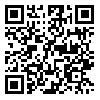1. Salmela-Aro K, Savolainen H, Holopainen L. Depressive symptoms and school burnout during adolescence: evidence from two cross-lagged longitudinal studies. J Youth Adolescence. 2009;38(10):1316–27. [
DOI]
2. Sharifshad F, Arsang Jang S, Kheyrollahi F. Prevalence of academic burnout and its related factors among medical student in Qom, Iran. Qom Univ Med Sci J. 2017;11(2):77–86. [Persian] [
Article]
3. Neumann Y, Finaly-Neumann E, Reichel A. Determinants and consequences of students' burnout in universities. J Higher Educ. 1990;61(1):20. [
DOI]
4. Salmela-Aro K, Kiuru N, Leskinen E, Nurmi JE. School Burnout Inventory (SBI): reliability and validity. Eur J Psychol Assess. 2009;25(1):48–57. [
DOI]
5. IsHak W, Nikravesh R, Lederer S, Perry R, Ogunyemi D, Bernstein C. Burnout in medical students: a systematic review. Clin Teach. 2013;10(4):242–5. [
DOI]
6. May RW, Seibert GS, Sanchez-Gonzalez MA, Fincham FD. Physiology of school burnout in medical students: Hemodynamic and autonomic functioning. Burnout Research. 2016;3(3):63–8. [
DOI]
7. Bowlby J. Attachment and loss: vol.3: loss: sadness and depression. Vintage/Ebury (A Division of Random House Group); 1980.
8. Goodwin I. The relevance of attachment theory to the philosophy, organization, and practice of adult mental health care. Clin Psychol Rev. 2003;23(1):35–56. [
DOI]
9. Babakhani N. The relationship between the big-five model of personality, self- regulated learning strategies and academic Performance of Islamic Azad University students. Procedia - Social and Behavioral Sciences. 2014;116:3542–7. [Persian] [
DOI]
10. Pines AM. Adult attachment styles and their relationship to burnout: a preliminary, cross-cultural investigation. Work & Stress. 2004;18(1):66–80. [
DOI]
11. Taylor RD. Demanding kin relations, adjustment problems and academic achievement and engagement among low-income, African American adolescents. J Child Fam Stud. 2018;27(3):707–16. [
DOI]
12. Rahimi M, Zarei E. The role of adult attachment dimensions in academic buoyancy with the mediation of coping self-efficacy and perfectionism dimensions. Research in School and Virtual Learning. 2016;3(12):59–70. [Persian] [
Article]
13. Shaikholeslami R, Taheri Zh. Causal explanation of academic buoyancy based on parental and peer attachment, and cognitive emotion regulation. Psychological Methods and Models. 2018;8(29):1–22. [Persian] [
Article]
14. Picado L, Pinto AM, Da Silva AL. The functional content of the early maladaptive schemas in the explanation of burnout and engagement. Int Educ Res J. 2017;3(10):34–35.
15. Komaei A, Asgari P, Heidari A, Naderi F, Makvandi B. Causal relationship between achievement goals and academic performance through the mediation of academic buoyancy in female students. Journal of Research in Educational Systems. 2020;14(48):109–25. [Persian] [
Article]
16. Yarahmadi Y, Ebrahimibakht H, Asadzadeh H, Ahmadian H. The effectiveness of academic buoyancy training program on students' academic performance, academic engagement, and academic buoyancy. Research in Teaching. 2018;6(2):163–82. [Persian] [
Article]
17. Putwain DW, Connors L, Symes W, Douglas-Osborn E. Is academic buoyancy anything more than adaptive coping? Anxiety Stress Coping. 2012;25(3):349–58. [
DOI]
18. Martin AJ, Marsh HW. Academic buoyancy: towards an understanding of students' everyday academic resilience. J Sch Psychol. 2008;46(1):53–83. [
DOI]
19. Hair JF, Black WC, Babin BJ, Anderson RE. Multivariate data analysis. NJ: Prentice Hall; 2009.
20. Collins NL. Working models of attachment: implications for explanation, emotion, and behavior. J Pers Soc Psychol. 1996;71(4):810–32. [
DOI]
21. Zibakerdar M. Barrasiye vizhegi haye ravan sanjiye porseshnameye delbastegi bozorgsalan Collins va Reed va rabetey an ba panj amele shakhsiati NEO-FFI-R [Evaluation of psychometric properties of Collins and Reed Adult Attachment Questionnaire and its relationship with five personality factors NEO-FFI-R] [Thesis for MSc]. [Tehran, Iran]: Faculty of Psychology and Educational Sciences, Islamic Azad University, Central Tehran Branch; 2013. [Persian]
22. Schaufeli WB, Martínez IM, Pinto AM, Salanova M, Bakker AB. Burnout and engagement in university students: a cross-national study. J Cross Cult Psychol. 2002;33(5):464–81. [
DOI]
23. Rostami Z, Abedi MR, Schuffli VB. Standardization of Maslash burnout inventory among female students at university of Isfahan. New Educational Approaches. 2011;6(1):21–38. [Persian] [
Article]
24. Dehghanizade M, Hosseinchari M. Sarzendegi tahsili va edrak az olgouye ertebati khanevade; naghshe vasete'ei khod karamadi [Academic vitality and perception of family communication pattern; The mediating role of self-efficacy]. Journal of Education and Learning Studies. 2012;4(2):21–47. [Persian] [
DOI]
25. Kline RB. Principles & practice of structural equation modeling. Third edition. New York: The Guilford Press; 2010.
26. Hajhosseini M, Hedayati E, Gholamali Lavasani M. The structural pattern of relationship between attachment styles and academic buoyancy: the mediating role of hope. Educational Psychology. 2021;17(59):1–22. [Persian] [
Article]
27. Mikulincer M, Shaver PR. Boosting attachment security to promote mental health, prosocial values, and inter-group tolerance. Psychological Inquiry. 2007;18(3):139–56. [
DOI]
28. Ainsworth, M, Blehar MC, Waters E, Wall SN. Patterns of attachment: a psychological study of the strange situation. New York: Routledge Taylor & Francis group Psychology Press; 2014.
29. Mikulincer M, Sheffi E. Adult attachment style and cognitive reactions to positive affect: a test of mental categorization and creative problem solving. Motiv Emot. 2000;24(3):149–74. [
DOI]

 ، فریبرز درتاج*2
، فریبرز درتاج*2 
 ، نورعلی فرخی2
، نورعلی فرخی2 




